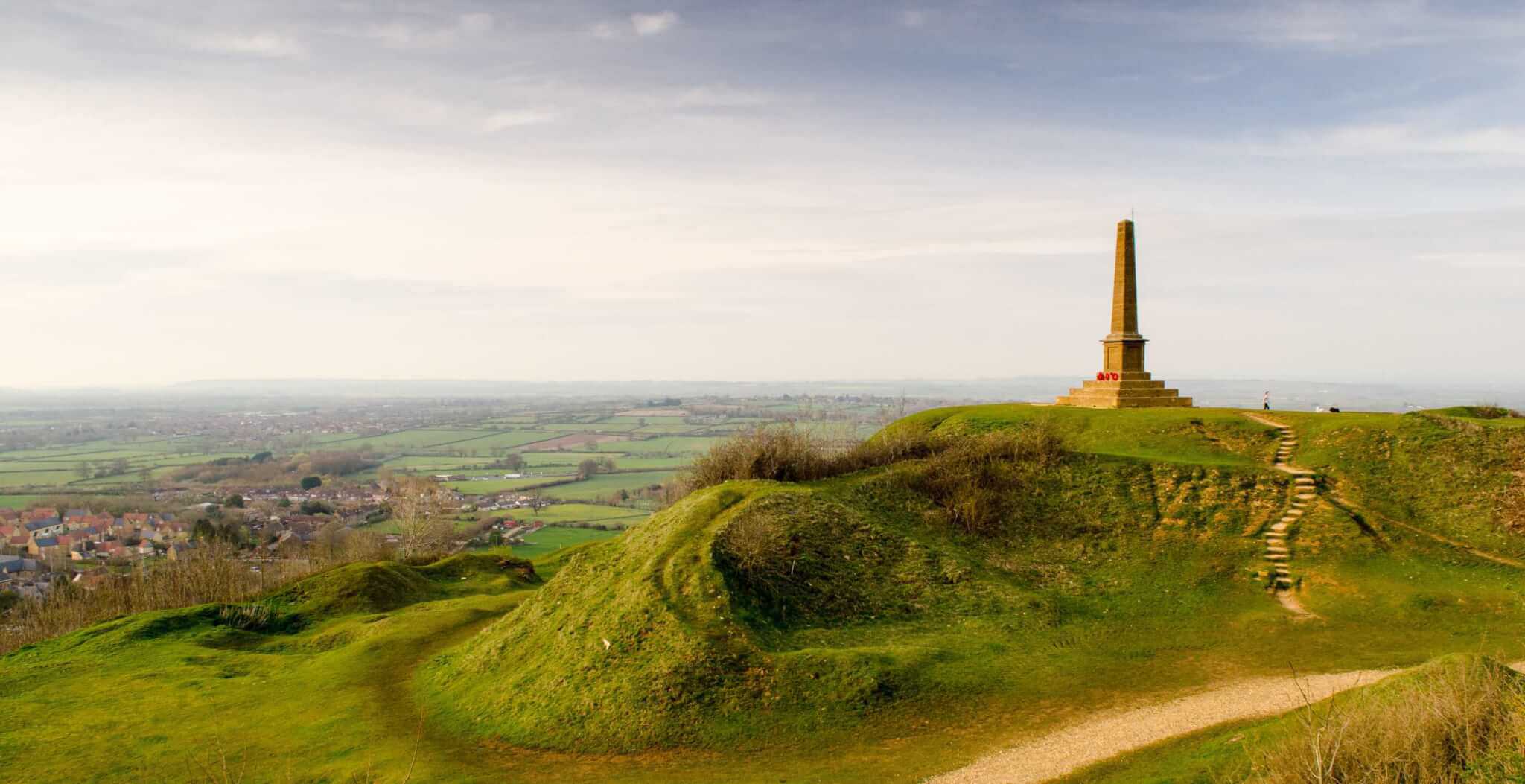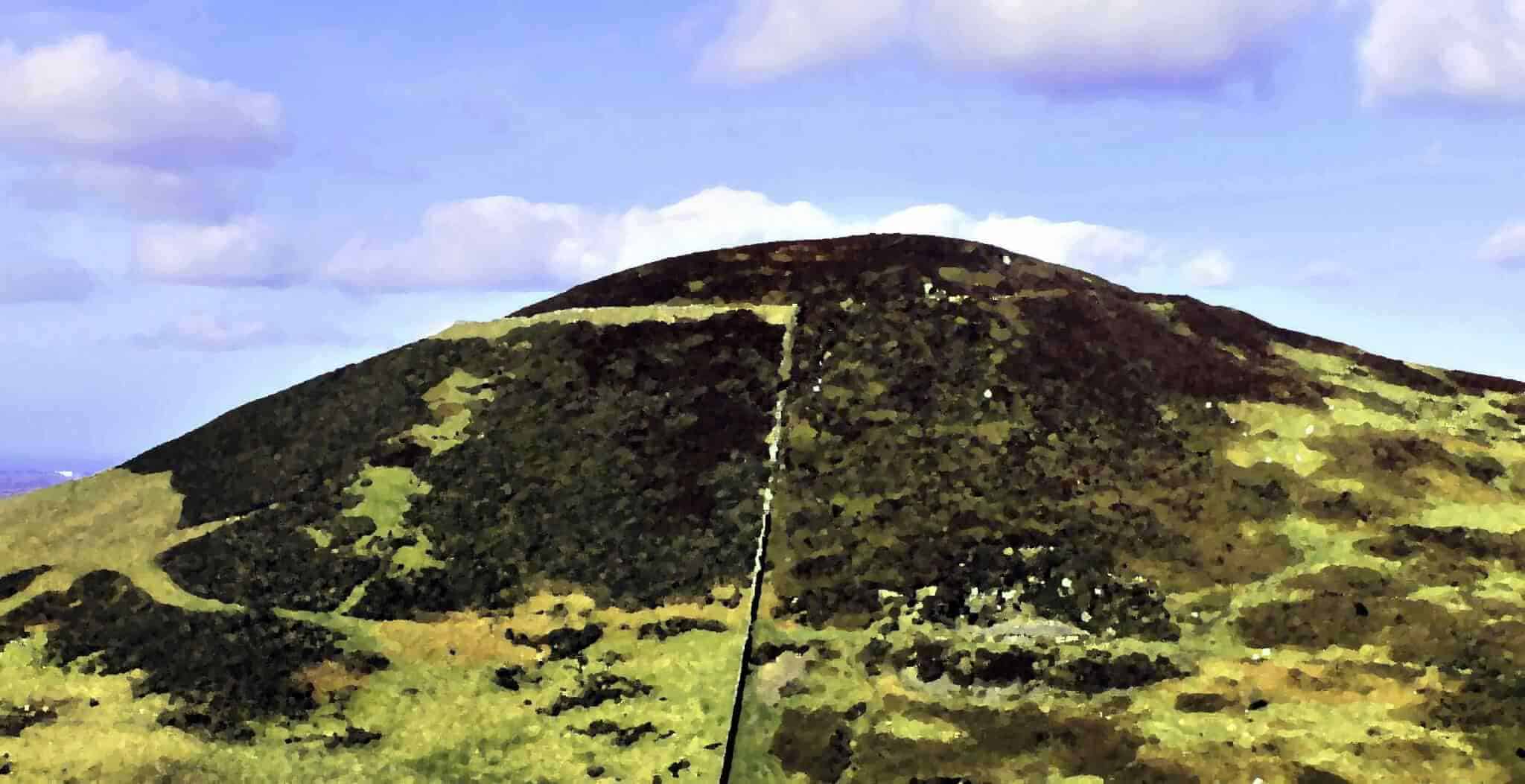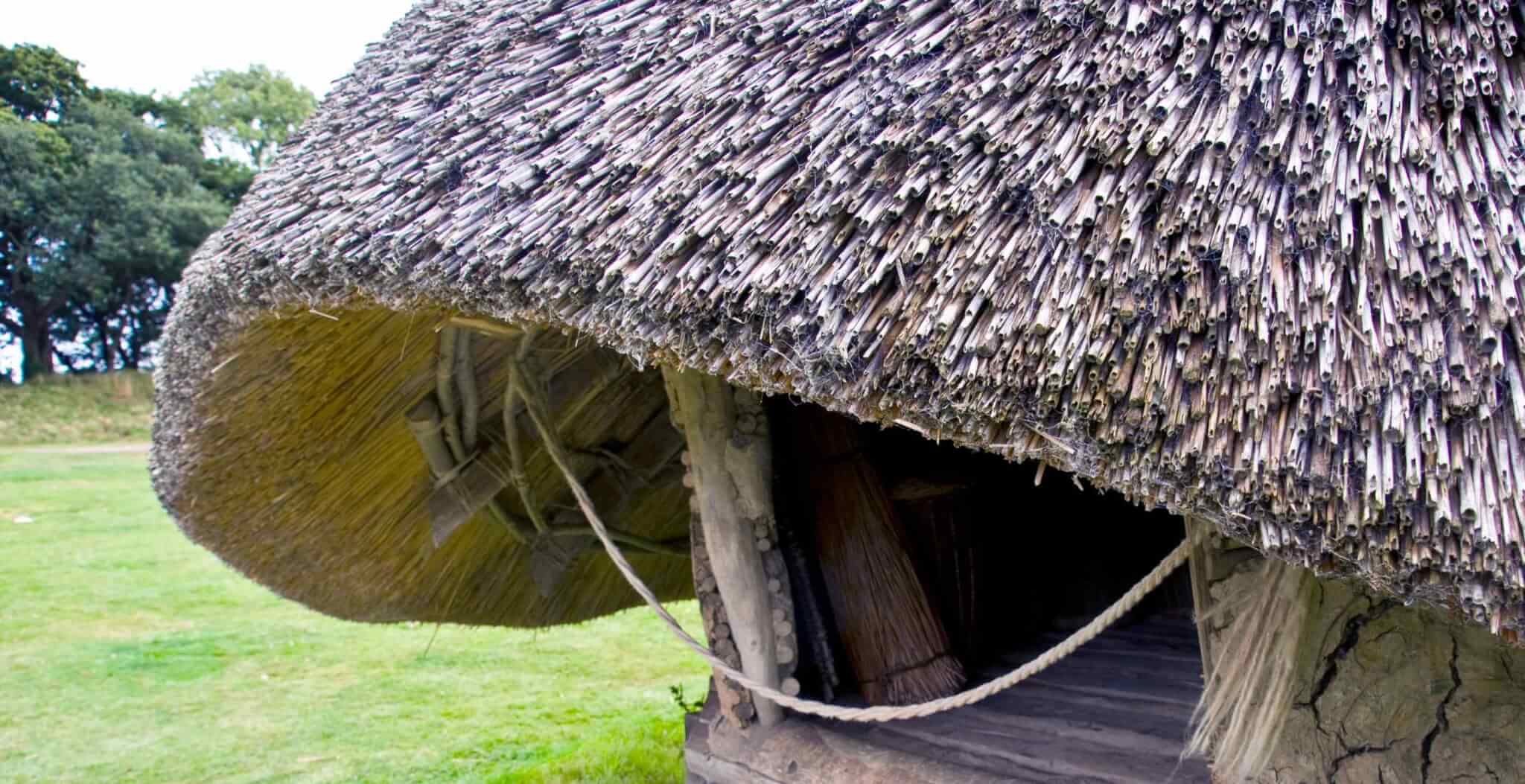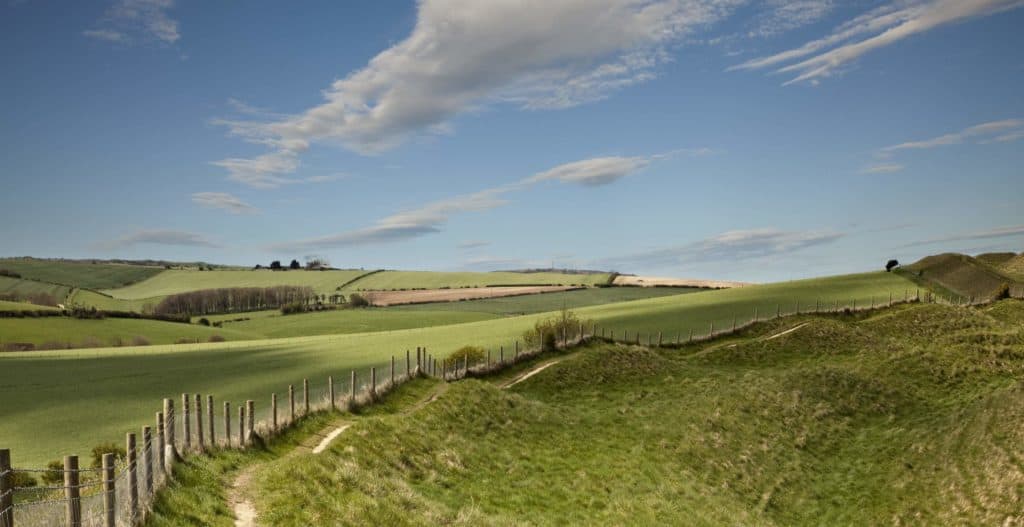Surely there can be few country pubs in England with a view to rival that of the Prince of Wales, high on Ham Hill in Somerset. Visitors and their four legged friends can enjoy a drink and a bite to eat whilst enjoying panoramic views over the stunning Somerset countryside.
And lovers of all things ancient are in for a treat as well – for Ham Hill is steeped in history. This unusual landscape boasts steeply sloping Iron Age ramparts, a deserted medieval village and the peculiar ‘pockmarks’ of hilly mounds and dips left from Victorian quarrying on the hill. Indeed, the surrounding villages all boast picturesque cottages built from this glorious honey-hued stone.

Ham Hill forms part of Hamdon Hill, one of the largest Iron Age hill forts of its kind in Great Britain. Constructed between 600BC and 100BC, the earthworks are man-made slopes which follow the natural contours of the land. The area enclosed by these defensive ramparts, approximately 200 acres, was a bustling settlement during the Iron Age, with roundhouses, trackways and field systems dividing up the flat top of the hillfort. The people farmed the land and traded for weapons and goods.

Despite its defences, the hillfort fell to the Roman invaders. In 1882 a horde of over 2000 Roman coins was found at Ham Hill and archaeological digs in the early 1900s discovered more coins, brooches, roof tiles and pottery. There is evidence of a Roman fort or military base near the present-day war memorial and also a 19-roomed villa in the field known as The Warren.
Moving on to the Middle Ages, there was a village called Witcombe Valley situated just outside the area of the hillfort, which was later deserted in the 16th century. The villagers farmed on the slopes of the hill and also quarried for the honey-gold hamstone from which the local residents built their houses. This warm-coloured stone gives the local villages their unique and beautiful character, with homes from the 10th century onwards constructed from the stone. The Victorians went on to further develop the quarries, digging deeper into the hillside as quarrying techniques advanced and leaving behind the unusual ‘pockmarked’ landscape that we see today – perfect for games of hide and seek!
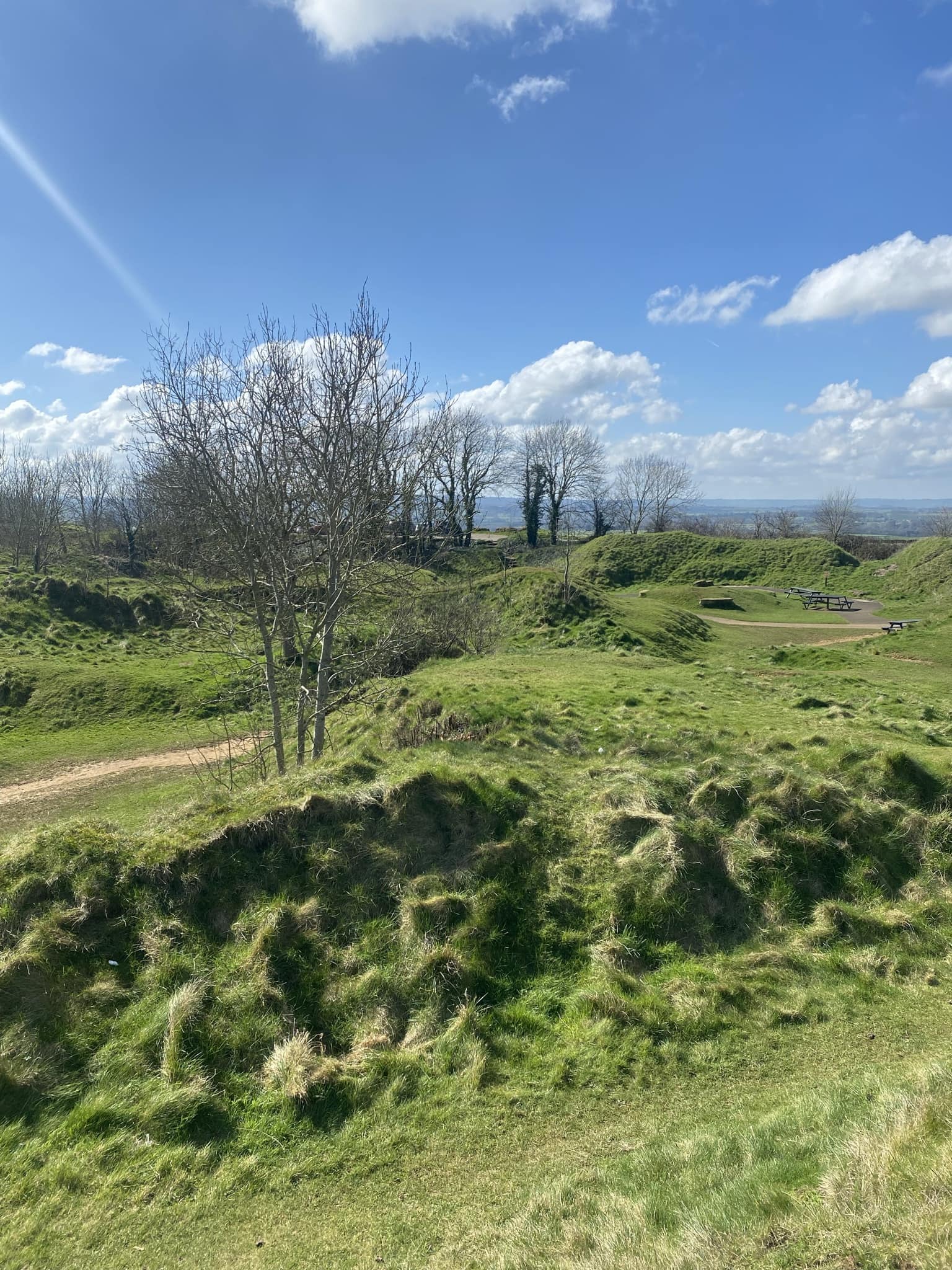
Ham Hill is also one of the most important geological locations in Somerset and includes a Regionally Important Geological Site (RIGS) with crystals and fossils, as well as a geological Site of Special Scientific Interest (SSSI). Hamstone, a Jurassic shelley limestone, has many special features and is composed of crushed up fragments of shells and other sea creatures. It is golden in colour because of iron compounds present in the rock. Hamstone is still quarried today for use in local buildings and sculptures.
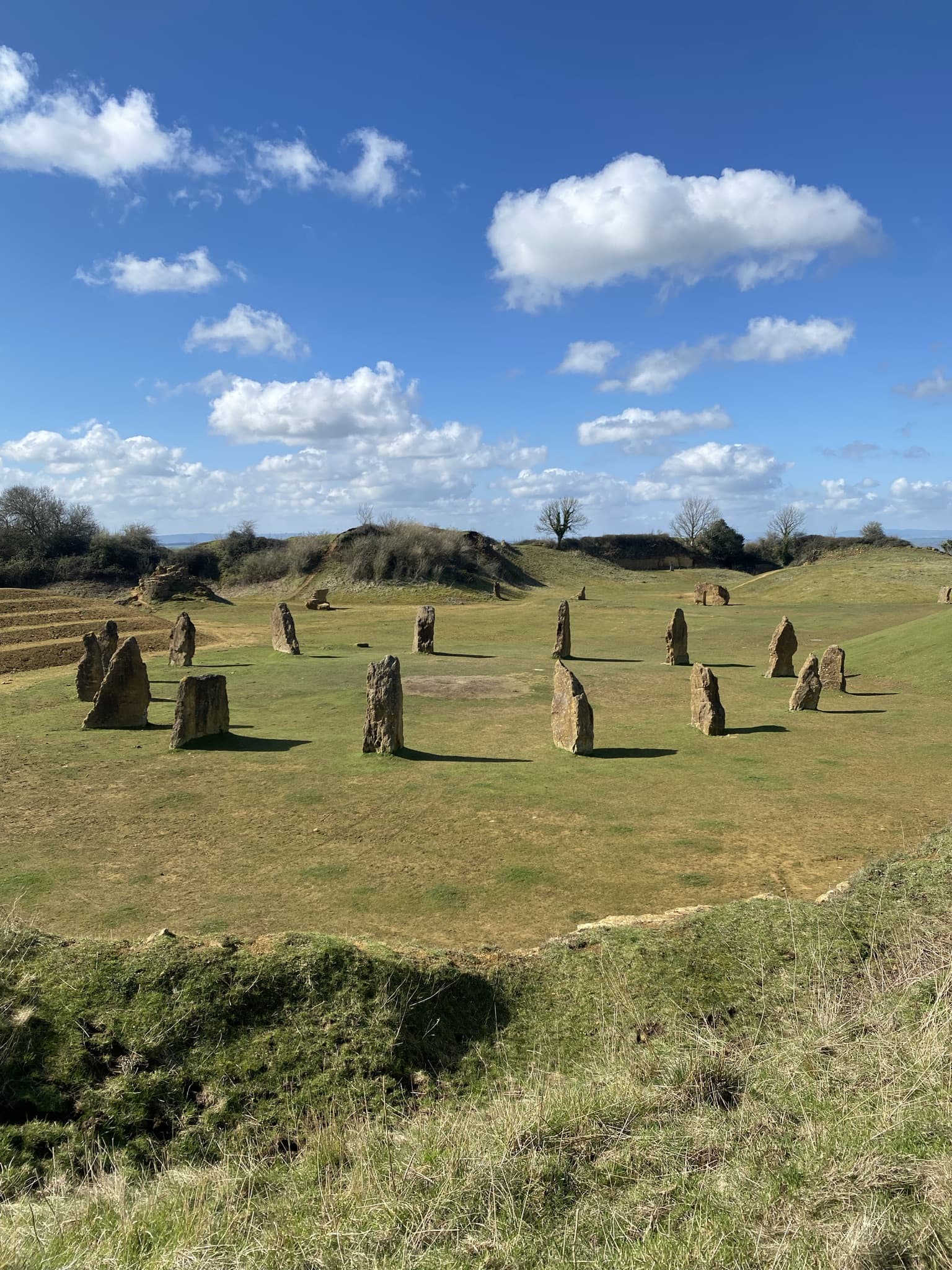
Oh, and don’t be fooled by the stone circle here: this modern monument was built by the Millennium Project to commemorate the long history of quarrying on Ham Hill!
How to get here.
Ham Hill Country Park is situated approx. 6 miles west of Yeovil. The villages of Montacute, Stoke Sub Hamdon and Norton Sub Hamdon lie at the foot of the hill. Follow the brown tourism signs from the village of Stoke Sub Hamdon.
